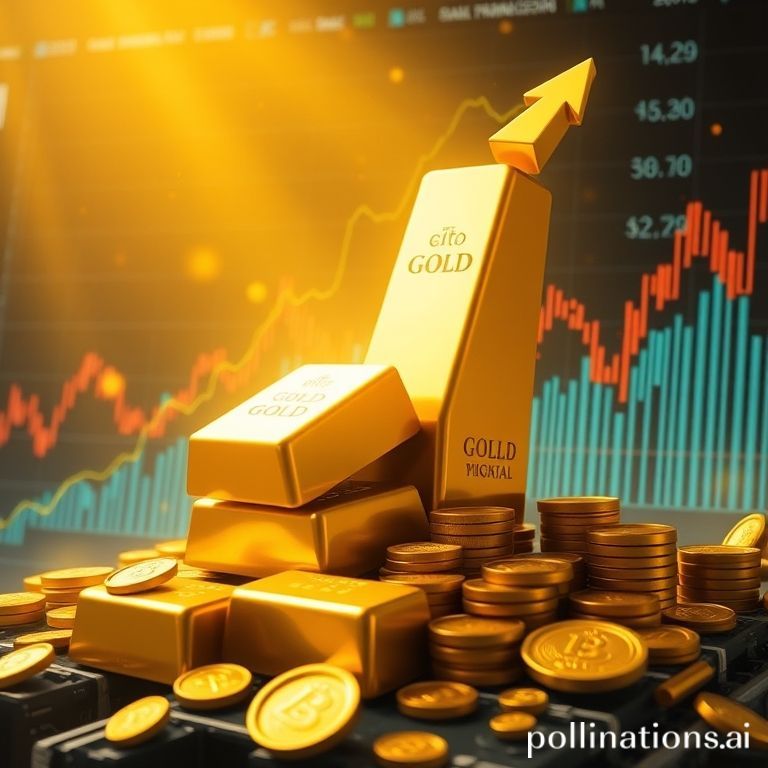
Gold has been a standout performer in the financial markets this year, captivating investors worldwide with its remarkable ascent. Just days after the U.S. central bank implemented its first interest rate cut in almost a year, gold prices soared to a new peak of $3,750 per ounce. This impressive surge makes it one of the year's top-performing assets, having already gained more than 43%. While traditionally revered as a safe haven asset during times of uncertainty, gold's current rally suggests a broader shift in investor perception, moving towards diversification and growth opportunities. The crucial question now is whether this bullish outlook can be sustained, or if the market is becoming overly optimistic.
The Pillars of Gold's Rally
Several powerful forces are converging to fuel gold's current "golden run." Understanding these underlying factors is key to projecting its future trajectory.
Unprecedented Central Bank Demand
Perhaps the most significant driver behind gold's impressive performance is the sustained and robust demand from central banks globally. These institutions are accumulating gold at a record pace, with projections indicating purchases could reach around 1,000 tons in 2025. This would mark the fourth consecutive year of massive central bank demand, a clear signal of their confidence in gold as a foundational reserve asset. Many central banks have also expressed intentions to further increase their gold reserves over the next five years. For instance, purchases in the second quarter of 2025 alone were 41% above the historical average. This consistent, large-scale buying provides a strong floor for gold prices, though some central banks are beginning to moderate their purchasing speed precisely due to the rising costs.
A Weaker U.S. Dollar
Another critical factor contributing to gold's surge is the notable weakness of the U.S. dollar. The dollar is currently experiencing one of its worst years since the 1970s. Given that gold is primarily traded in U.S. dollars, a depreciation of the greenback automatically makes gold more affordable for investors holding other currencies, thereby boosting demand and acting as a significant tailwind for its price. This inverse relationship often sees gold thrive when the dollar falters.
Geopolitical Tensions and Evolving Investor Perceptions
Geopolitical uncertainty continues to play a pivotal role in gold's appeal. In times of global instability, gold has historically served as a defensive asset and a reliable safe haven, preserving wealth when other assets decline. However, what makes the current situation particularly intriguing is that gold is rising in tandem with riskier assets like stocks and cryptocurrencies. This unusual correlation suggests a fascinating evolution in investor psychology. It indicates that modern investors are increasingly viewing gold not merely as a hedge against risk, but also as a valuable tool for portfolio diversification and even as a speculative asset for further growth potential. This dual role underscores its growing versatility in a complex financial landscape.
Navigating the Future: Potential Scenarios for Gold
The path forward for gold will largely depend on a delicate interplay of central bank policies, the dollar's trajectory, and the overall health of the global economy. According to a recent Bank of America survey, only a small fraction of fund managers, approximately 10%, anticipate a recession or "hard landing." The majority of investors are banking on a "soft landing" scenario, where inflation is tamed and interest rates are lowered without significantly stifling economic growth. However, some current economic indicators hint at a "no landing" scenario, where inflation persistently remains above the Federal Reserve's target, the labor market experiences a sharp downturn, and external shocks, such as new trade tariffs, materialize.
Historically, gold has demonstrated resilience across various economic environments. It tends to perform exceptionally well during recessions, often delivering robust returns, but also provides solid performance during periods of soft landings. This inherent stability in diverse economic conditions strengthens its appeal.
The Dollar's Enduring Influence
Another potential catalyst that could propel gold prices even higher is a significant loss of confidence in the U.S. dollar, which could trigger a mass exodus of capital from government bonds into gold. This phenomenon might accelerate if political pressures on the Federal Reserve's independence intensify. While the dollar's status as the world's primary reserve currency faces challenges, its trust factor is perhaps not as fragile as some might assume. A recent Retail Investor Beat survey, for instance, revealed that only 9% of Czech retail investors believe the dollar will lose its reserve currency status within the next decade, suggesting a degree of underlying confidence remains.
Short-Term Caution Amidst Long-Term Potential
Despite the compelling long-term outlook, it is prudent to exercise caution in the short term. Gold currently appears to be in an overbought condition, suggesting that its rapid price appreciation might be due for a consolidation phase. For investors who missed the initial stages of this impressive rally, a measured approach is advisable. It would be wise to wait for the formation of a new, more stable price range before making significant new investments. While gold's intrinsic value and its evolving role in investment portfolios remain strong, timing is always a critical factor in successful investing.
